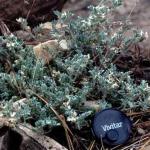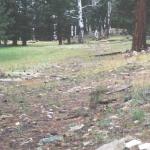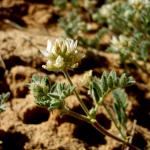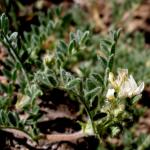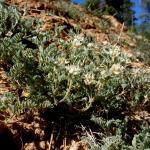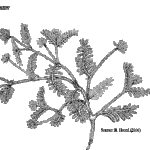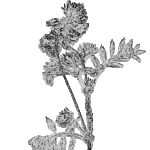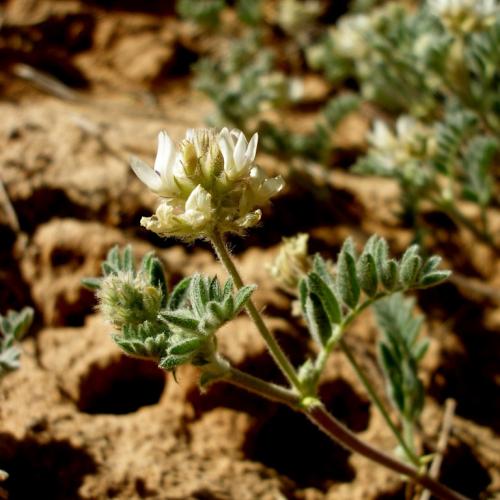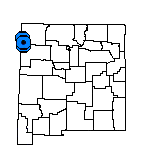Astragalus chuskanus (Chuska Mt Milkvetch)
NONE
| USFWS | State of NM | USFS | BLM | Navajo Nation | State Rank | Global Rank | R-E-D Code | NMRPTC Status | Strategy Status |
|---|---|---|---|---|---|---|---|---|---|
| S3 | G3 | 2-1-2 | R | SS |
| Overall Conservation Status | Documented Threats | Actions Needed |
|---|---|---|
| UNDER CONSERVED | No Information |
See SEINet for documentation, NNHP data exchange |
Matted perennial herb; stems spreading on ground (humistrate), freely branching, densely leafy, to 4 dm long; herbage densely hairy with soft, fine, basifixed hairs; stipules connate; leaves silvery-gray, 1.5-4 cm long; leaflets 9-15, obovate or oblong-elliptic, 2.5-9 mm long, 1-3 mm wide; racemes shortly but loosely 4-10 flowered; flowers pea-like; calyx about 5.5 mm long; petals whitish, fading to ochroleucous, often blushed with lilac or dull purple; pods lying on the ground, twisted on the stalk and ascending, sessile, obliquely semi-ovoid, pilosulous, 6 mm long (excluding the persistent style base), 3 mm wide.
A second phase has been recognized as the variety spellenbergii (Welsh 2007). This variety is more robust, tends to bear greenish leaflets that are flat, with a calyx 5.5 - 6.9 mm long, tube 3-3.8 mm long and teeth 2-3.1 mm long, and a banner measuring 8-10 mm long, vs. calyx 4.5-5.3 mm long, tube 2.5-3.2 mm, teeth 1.5-2.6 mm long, a banner 7.3-8 mm. Flowers late May through July.
Astragalus chuskanus is distinguished from A. micromerius by its more robust habit, longer leaves, greater number of flowers, and slightly larger pods. Astragalus humistratus has dolabriform hairs versus basifixed hairs in A. chuskanus.
New Mexico, San Juan and McKinley counties, Chuska Mountains; adjacent Arizona.
Both varieties occur on degraded Chuska sandstone in openings of Ponderosa pine and montane coniferous forest above 1,650 m (5,500 ft).
Astragalus chuskanus is often found on roadcuts and disturbed areas.
No studies have evaluated the effects of grazing, timber harvest, or fire on this species.
*Barneby, R.C. and R. Spellenberg. 1987. A new species of Astragalus (Leguminosae) from northwestern New Mexico and adjacent Arizona. Brittonia 39(2):188-191.
Isely, D. 1998. Native and naturalized Leguminosae (Fabaceae) of the United States. Monte L. Beane Life Science Museum, Brigham Young University, Provo, Utah.
Welsh, S.L. 2007. North American Species of Astragalus Linnaeus (Leguminosae): A Taxonomic Revision. Brigham Young University, Provo, UT.
For distribution maps and more information, visit Natural Heritage New Mexico


